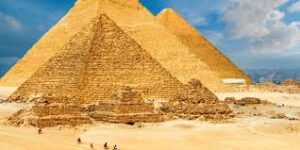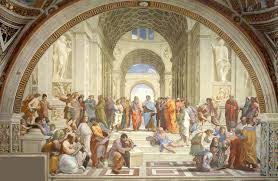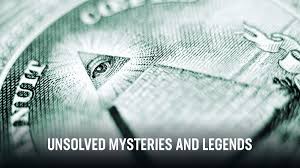Ancient civilizations laid the groundwork for much of modern society, contributing remarkable innovations, cultural achievements, and historical milestones. While many people are familiar with the broad strokes of ancient history, there are countless fascinating and unbelievable facts that reveal the complexity and ingenuity of these early societies. This article explores some of the most astonishing historical facts about ancient civilizations, offering insights into their achievements and mysteries.
1. The Pyramids of Giza: Beyond the Basics

1.1. The Precision of the Great Pyramid
- Overview: The Great Pyramid of Giza, built around 2580–2560 BCE, is one of the Seven Wonders of the Ancient World and showcases extraordinary architectural precision.
- Fact: The Great Pyramid is aligned almost perfectly with the cardinal points, with its sides closely aligned to the four cardinal directions. Modern studies show that its construction achieved a remarkable level of precision, with only 0.067 degrees of deviation from true north.
1.2. The Lost Technology of the Pyramids
- Overview: The exact methods used to construct the pyramids remain a subject of debate and mystery.
- Fact: Recent theories suggest that advanced engineering techniques, including the use of levers and possibly water-based systems, may have been employed to move and position the massive stone blocks. However, the exact technology used by the ancient Egyptians is still not fully understood.
2. Mesopotamia: Cradle of Civilization
2.1. The Birth of Writing
- Overview: Mesopotamia, often regarded as the cradle of civilization, is where one of the earliest writing systems, cuneiform, was developed.
- Fact: Cuneiform writing, which began around 3400 BCE, used wedge-shaped marks made on clay tablets. It evolved from simple pictographs into a complex script used for various administrative, legal, and literary purposes.
2.2. The Sumerian King List
- Overview: The Sumerian King List is an ancient manuscript that lists kings of Sumer and their reigns.
- Fact: The list includes both historical and mythical kings, some of whom purportedly ruled for thousands of years. This blending of fact and legend offers a glimpse into how the Sumerians viewed their own history and the divine right of kings.
3. Ancient China: Innovations and Mysteries
3.1. The Terracotta Army
- Overview: The Terracotta Army, buried near the tomb of China’s first Emperor Qin Shi Huang (reigned 221–210 BCE), consists of thousands of life-sized clay soldiers.
- Fact: Discovered in 1974, the army includes not only soldiers but also horses, chariots, and various types of weaponry. Each figure has unique facial features and expressions, suggesting that they were modeled after real individuals.
3.2. The Great Wall’s Construction
- Overview: The Great Wall of China, an iconic symbol of ancient engineering, was constructed over several dynasties.
- Fact: Contrary to popular belief, the wall was not a continuous barrier but rather a series of walls and fortifications built by various dynasties over centuries. Some sections were constructed using materials like tamped earth and wood rather than stone.
4. Ancient Greece: Philosophical and Scientific Prowess

4.1. The Antikythera Mechanism
- Overview: The Antikythera Mechanism, discovered in a shipwreck off the coast of the Greek island Antikythera, is an ancient analog computer used to predict astronomical positions and eclipses.
- Fact: Dating back to around 100 BCE, this sophisticated device is considered one of the earliest known examples of complex mechanical technology. Its intricacy was not seen again until the development of similar technology in medieval times.
4.2. The Lost City of Atlantis
- Overview: Atlantis is a legendary island first mentioned by the Greek philosopher Plato in his dialogues “Timaeus” and “Critias.”
- Fact: The story of Atlantis has captivated imaginations for centuries, with various theories about its existence and location. While no concrete evidence has been found, the legend has inspired numerous explorations and theories about lost civilizations.
5. Ancient India: Spiritual and Scientific Contributions
5.1. The Indus Valley Civilization
- Overview: The Indus Valley Civilization, one of the world’s earliest urban cultures, flourished around 2500–1900 BCE in what is now Pakistan and northwest India.
- Fact: The civilization had advanced urban planning, including well-laid streets, sophisticated drainage systems, and standardized brick sizes. Despite its complexity, the script used by the Indus Valley people remains undeciphered, adding to its mystery.
5.2. Ancient Indian Surgery
- Overview: Ancient India made significant advances in medicine and surgery, particularly during the time of Sushruta, a prominent ancient surgeon.
- Fact: The Sushruta Samhita, an ancient Sanskrit text on medicine and surgery, describes various surgical techniques, including rhinoplasty (reconstruction of the nose) and cataract surgery. Some of these techniques are still in use today.
6. The Maya: Astronomy and Architecture
6.1. The Maya Calendar
- Overview: The Maya civilization, known for its achievements in astronomy and mathematics, developed a complex calendar system.
- Fact: The Maya calendar included a 260-day ritual calendar and a 365-day solar calendar. The precise alignment of their calendar system and its accuracy in predicting astronomical events demonstrate the Maya’s advanced understanding of celestial cycles.
6.2. The Maya Pyramids
- Overview: The Maya constructed impressive pyramids and temples throughout their cities, including the famous pyramids at Chichen Itza.
- Fact: The pyramid of El Castillo at Chichen Itza is designed to create a visual effect during the equinoxes. As the sun sets, the shadow of a serpent appears to slither down the pyramid’s steps, reflecting the Maya’s advanced knowledge of astronomy.
7. The Inca Empire: Engineering Marvels
7.1. Machu Picchu’s Construction
- Overview: Machu Picchu, the iconic Inca citadel located in the Andes Mountains, was built in the 15th century by the Inca emperor Pachacuti.
- Fact: Machu Picchu’s construction involved precisely cut stones that fit together perfectly without mortar. The site’s location on a steep mountain ridge and its sophisticated terracing demonstrate the Incas’ remarkable engineering skills.
7.2. The Inca Road Network
- Overview: The Inca Empire had an extensive road network stretching over 25,000 miles, connecting various parts of the vast empire.
- Fact: The roads, built using advanced engineering techniques, included suspension bridges made from woven grass. This network facilitated communication, trade, and military movements across the challenging Andean terrain.
8. Unsolved Mysteries and Legends

8.1. The Oracle of Delphi
- Overview: The Oracle of Delphi was a prestigious figure in ancient Greece, believed to channel the prophecies of the god Apollo.
- Fact: The exact methods used by the oracle to deliver her prophecies remain unknown. Some theories suggest that she inhaled vapors from natural fissures in the earth, which may have induced altered states of consciousness.
8.2. The Moai Statues of Easter Island
- Overview: The Moai statues on Easter Island are massive stone figures created by the Rapa Nui people between 1400 and 1650 CE.
- Fact: The construction and transportation of these statues remain a subject of fascination. Recent studies suggest that the statues were “walked” to their locations using a coordinated swaying technique, defying earlier theories about their transportation.
Conclusion
Ancient civilizations were incredibly advanced and left behind a rich legacy of innovations, mysteries, and achievements. The unbelievable historical facts presented here illustrate the complexity and ingenuity of societies such as Egypt, Mesopotamia, China, Greece, India, the Maya, and the Inca Empire. From architectural marvels and scientific advancements to unsolved mysteries and legendary figures, these civilizations continue to captivate and inspire us. Exploring their remarkable contributions helps us appreciate the depth of human history and the enduring impact of these ancient cultures on our modern world.

